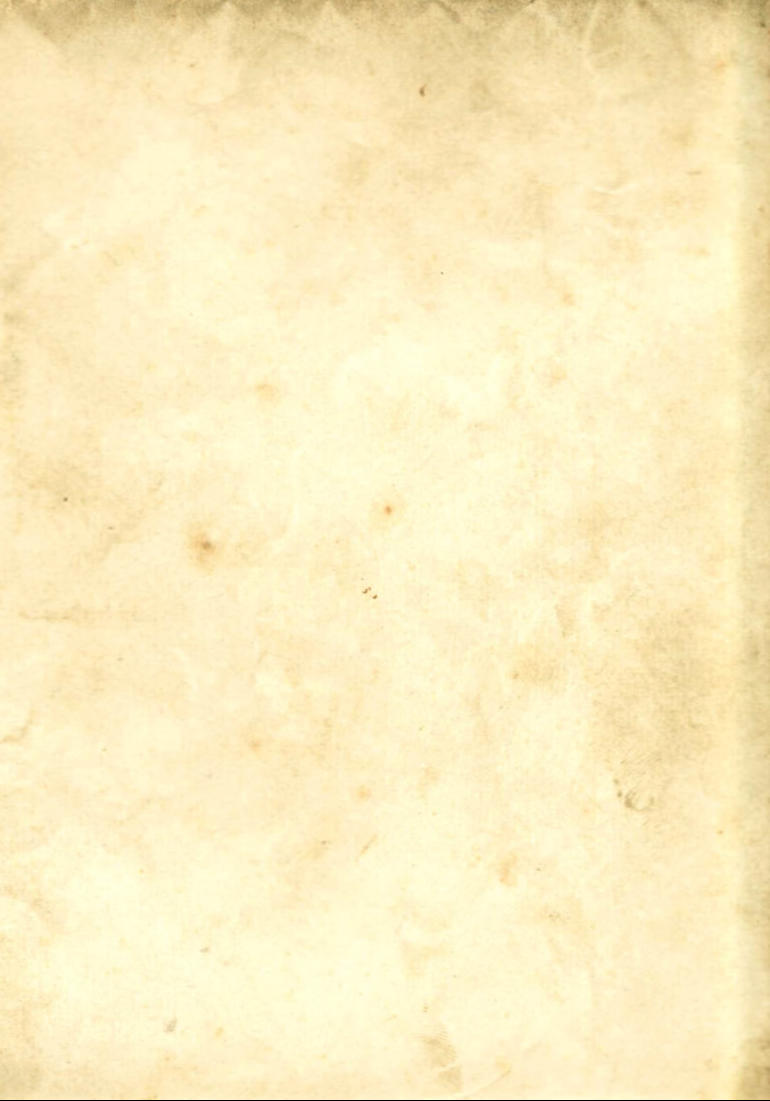
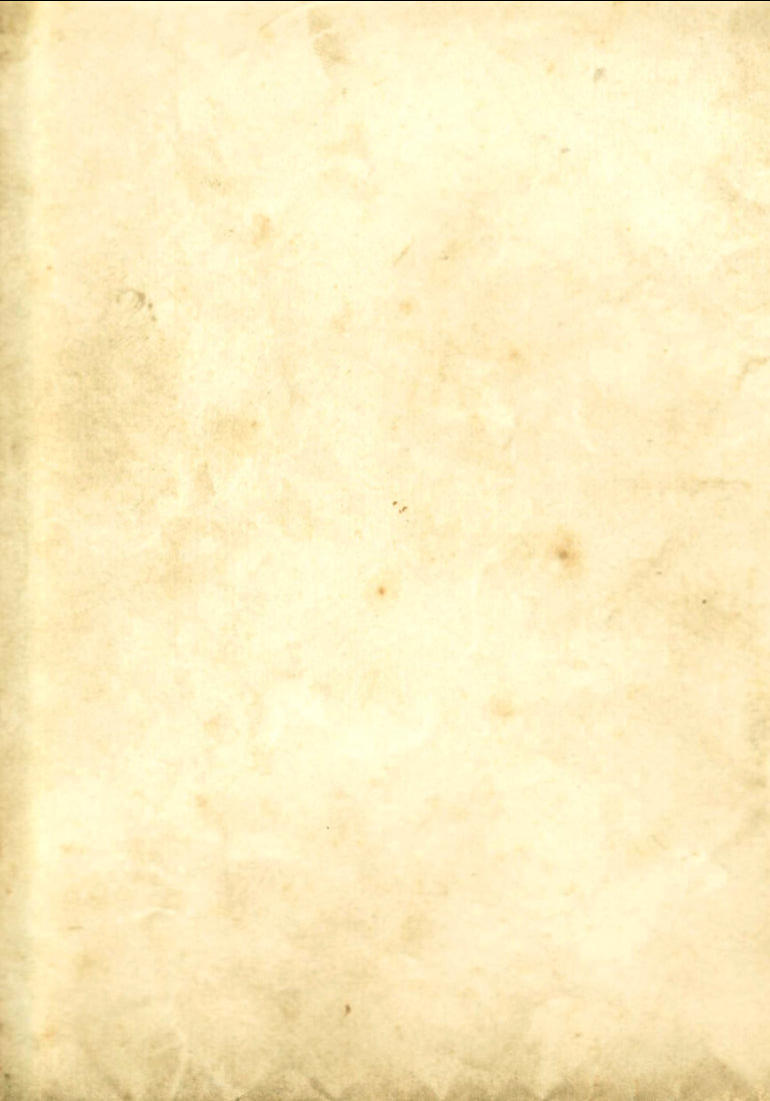
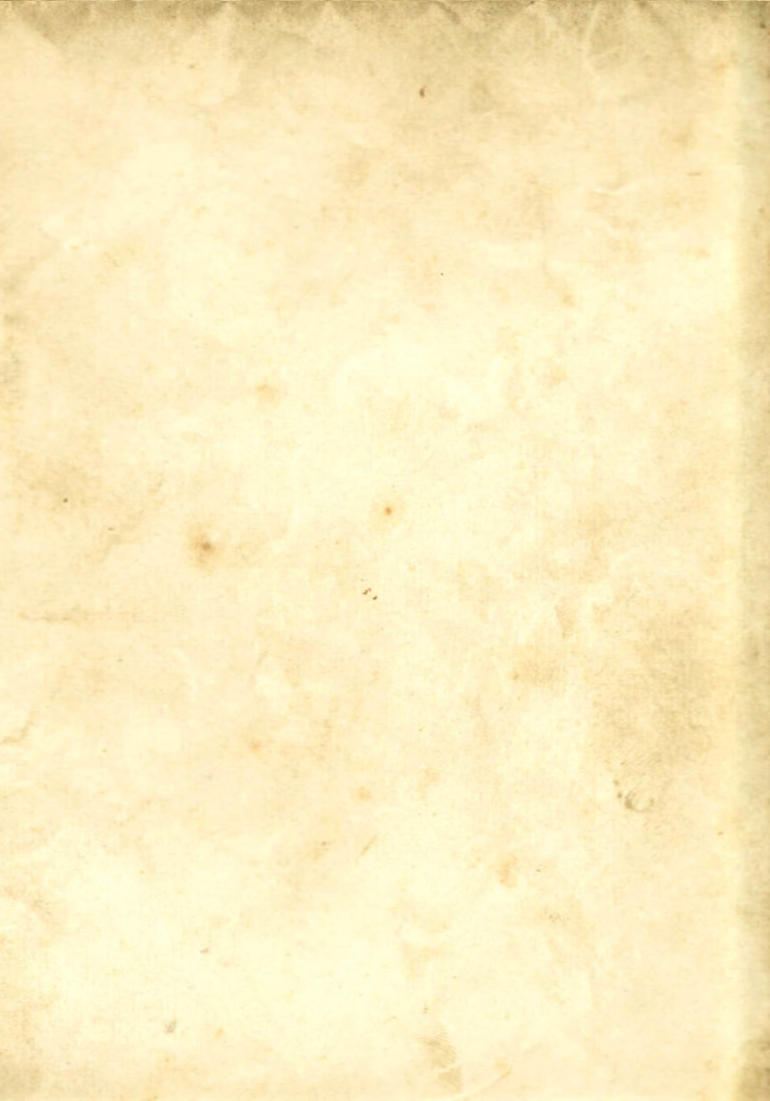
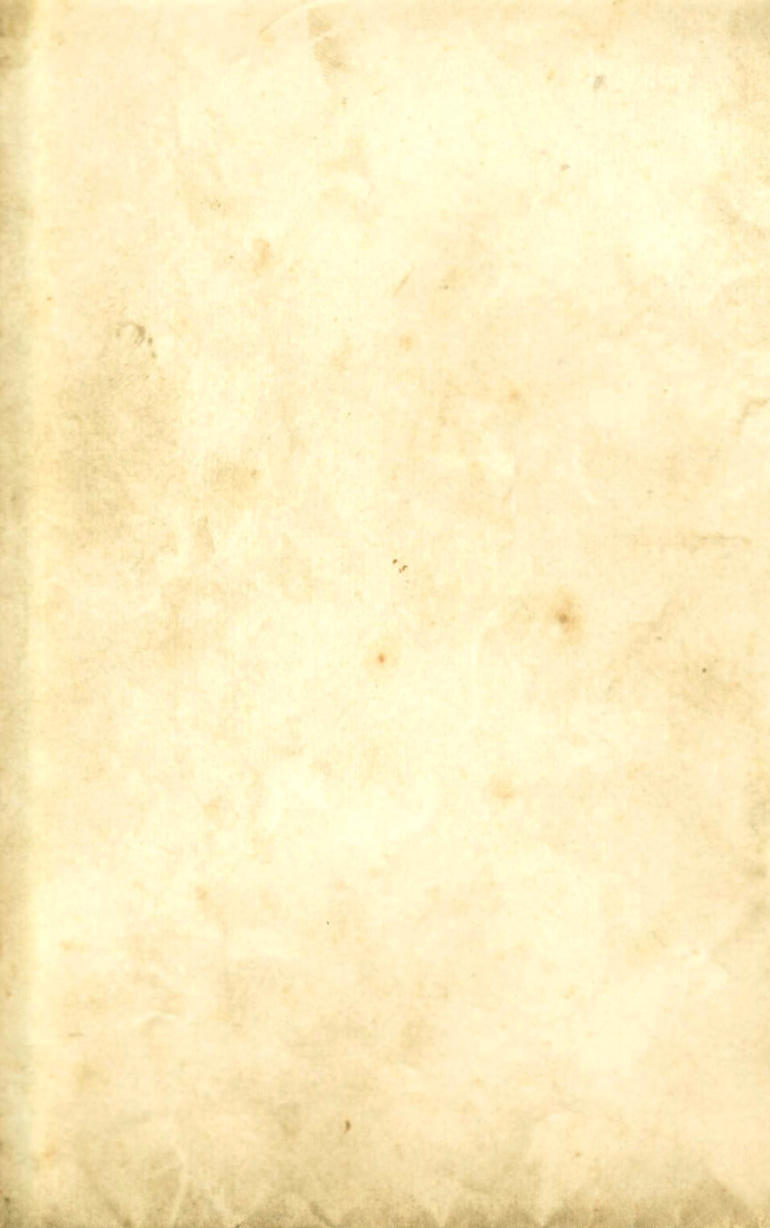
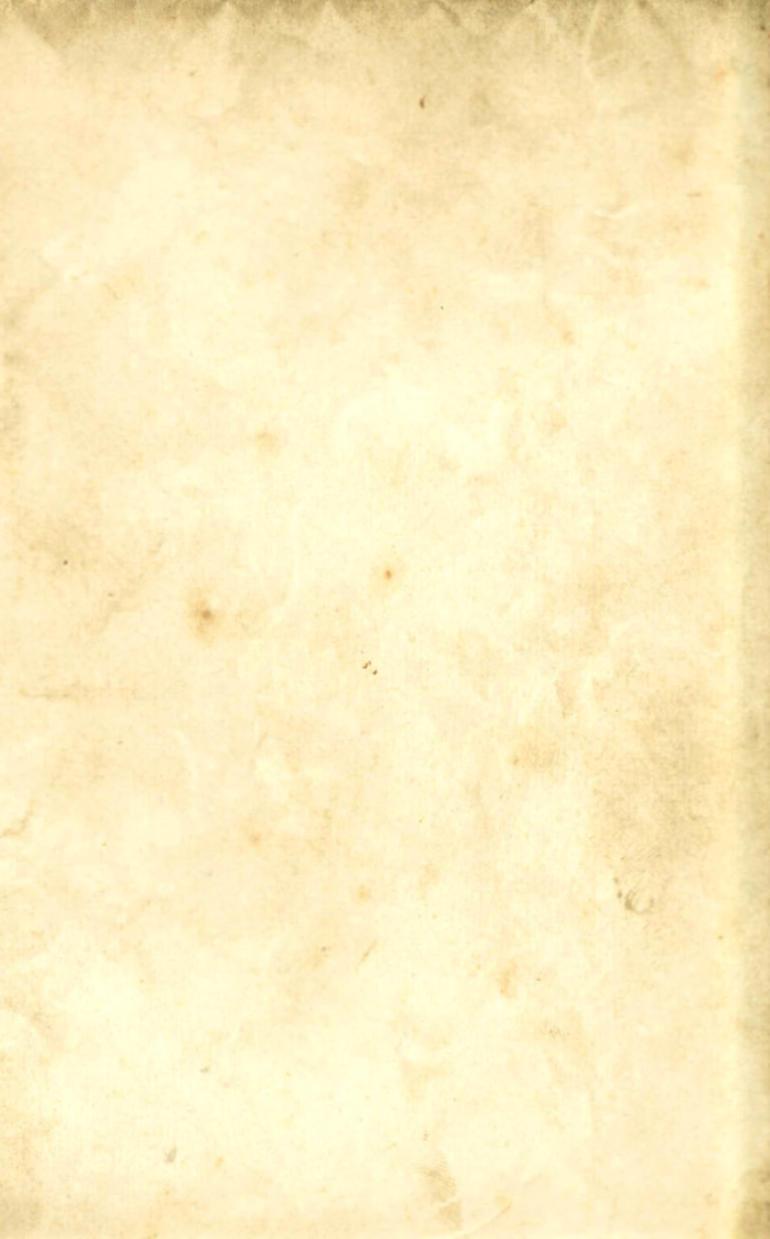


















FLAMES
PAINTING
PAINTING FLAMES IN
THE SILVER BAYONET
Painting flames or fire is one of those things that look a lot harder to do than it actually is. Like most of the painting I
harder to do than it actually is. Like most of the painting I do it is a process of building up layers of colours one after
do it is a process of building up layers of colours one after the other. The painting of such an ephemeral thing as Fire
the other. The painting of such an ephemeral thing as Fire is a challenge, and it does require the exercise judgement
is a challenge, and it does require the exercise judgement as to where to put the paint, but experience gained in
as to where to put the paint, but experience gained in practicing and this guide, will hopefully lead you to
practicing and this guide, will hopefully lead you to success.
INTO THE FIRE
Firstly have a good look at flames, painted ones I mean.
success.
INTO THE FIRE
Firstly have a good look at flames, painted ones I mean. Try to see what colours have been used and how those
Try to see what colours have been used and how those colours have been applied to create the flame effect.
colours have been applied to create the flame effect. That’s what I did with this model, luckily I had a good
That’s what I did with this model, luckily I had a good model to study, a figure painted by master painter
model to study, a figure painted by master painter Andrew Taylor. So I tried to figure out what he did and
Andrew Taylor. So I tried to figure out what he did and replicate in this model. It isn’t an exact copy of course but
replicate in this model. It isn’t an exact copy of course but hopefully I have done enough to give a convincing look of
hopefully I have done enough to give a convincing look of a flaming torch. It does seem a lot of layers to build up but
a flaming torch. It does seem a lot of layers to build up but I hope you will think it is worth experimenting with.
I hope you will think it is worth experimenting with.  The major difference to my usual painting is, for flames I
The major difference to my usual painting is, for flames I worked from light to dark, instead of working from darker
worked from light to dark, instead of working from darker shades to lighter highlights that I use in normal painting. It
shades to lighter highlights that I use in normal painting. It is most important that some of the lighter colours
is most important that some of the lighter colours underneath show through to give the fire some glowing
underneath show through to give the fire some glowing life.
All paints are from The Army Painter.
UNDERCOAT
The first thing I did was to paint the flame area MATT
life.
All paints are from The Army Painter.
UNDERCOAT
The first thing I did was to paint the flame area MATT WHITE, another undercoat if you will, making sure I
WHITE, another undercoat if you will, making sure I covered the black undercoat completely, this took several
covered the black undercoat completely, this took several coats of white. In theory you could paint the base colours
coats of white. In theory you could paint the base colours for the flames straight onto the black, but light yellow paint
for the flames straight onto the black, but light yellow paint is notoriously difficult to get to cover over black, so I
is notoriously difficult to get to cover over black, so I recommend that you use white first and then it doesn’t
recommend that you use white first and then it doesn’t 
 harder to do than it actually is. Like most of the painting I
harder to do than it actually is. Like most of the painting I do it is a process of building up layers of colours one after
do it is a process of building up layers of colours one after the other. The painting of such an ephemeral thing as Fire
the other. The painting of such an ephemeral thing as Fire is a challenge, and it does require the exercise judgement
is a challenge, and it does require the exercise judgement as to where to put the paint, but experience gained in
as to where to put the paint, but experience gained in practicing and this guide, will hopefully lead you to
practicing and this guide, will hopefully lead you to success.
INTO THE FIRE
Firstly have a good look at flames, painted ones I mean.
success.
INTO THE FIRE
Firstly have a good look at flames, painted ones I mean. Try to see what colours have been used and how those
Try to see what colours have been used and how those colours have been applied to create the flame effect.
colours have been applied to create the flame effect. That’s what I did with this model, luckily I had a good
That’s what I did with this model, luckily I had a good model to study, a figure painted by master painter
model to study, a figure painted by master painter Andrew Taylor. So I tried to figure out what he did and
Andrew Taylor. So I tried to figure out what he did and replicate in this model. It isn’t an exact copy of course but
replicate in this model. It isn’t an exact copy of course but hopefully I have done enough to give a convincing look of
hopefully I have done enough to give a convincing look of a flaming torch. It does seem a lot of layers to build up but
a flaming torch. It does seem a lot of layers to build up but I hope you will think it is worth experimenting with.
I hope you will think it is worth experimenting with.  The major difference to my usual painting is, for flames I
The major difference to my usual painting is, for flames I worked from light to dark, instead of working from darker
worked from light to dark, instead of working from darker shades to lighter highlights that I use in normal painting. It
shades to lighter highlights that I use in normal painting. It is most important that some of the lighter colours
is most important that some of the lighter colours underneath show through to give the fire some glowing
underneath show through to give the fire some glowing life.
All paints are from The Army Painter.
UNDERCOAT
The first thing I did was to paint the flame area MATT
life.
All paints are from The Army Painter.
UNDERCOAT
The first thing I did was to paint the flame area MATT WHITE, another undercoat if you will, making sure I
WHITE, another undercoat if you will, making sure I covered the black undercoat completely, this took several
covered the black undercoat completely, this took several coats of white. In theory you could paint the base colours
coats of white. In theory you could paint the base colours for the flames straight onto the black, but light yellow paint
for the flames straight onto the black, but light yellow paint is notoriously difficult to get to cover over black, so I
is notoriously difficult to get to cover over black, so I recommend that you use white first and then it doesn’t
recommend that you use white first and then it doesn’t 
matter if the yellow is a bit weak, the white will help to boost the yellow.
PAINTING FLAMES
1.
The first real stage is painting a 50/50 mix of
boost the yellow.
PAINTING FLAMES
1.
The first real stage is painting a 50/50 mix of DEMONIC YELLOW and MATT WHITE, over all of, the
DEMONIC YELLOW and MATT WHITE, over all of, the now white undercoated flame area. This too may take a
now white undercoated flame area. This too may take a few coats before it looks solid enough. It’s best to do this
few coats before it looks solid enough. It’s best to do this in a few thinner coats rather than trying to get coverage by
in a few thinner coats rather than trying to get coverage by putting on a blobby thick coat
putting on a blobby thick coat
 boost the yellow.
PAINTING FLAMES
1.
The first real stage is painting a 50/50 mix of
boost the yellow.
PAINTING FLAMES
1.
The first real stage is painting a 50/50 mix of DEMONIC YELLOW and MATT WHITE, over all of, the
DEMONIC YELLOW and MATT WHITE, over all of, the now white undercoated flame area. This too may take a
now white undercoated flame area. This too may take a few coats before it looks solid enough. It’s best to do this
few coats before it looks solid enough. It’s best to do this in a few thinner coats rather than trying to get coverage by
in a few thinner coats rather than trying to get coverage by putting on a blobby thick coat
putting on a blobby thick coat

Above. Prussian fire holds off the zombie horde in The Silver Bayonet.

Above. The first thing I did was to paint the flame area MATT
WHITE, another undercoat if you will, making sure I covered
the black undercoat completely, this took several coats of
white.
2.
That is the easy bit done. The second colour is DEMONIC YELLOW mixed with MATT WHITE plus
DEMONIC YELLOW mixed with MATT WHITE plus some FIRE LIZARD, which is a nice fiery orange. This
some FIRE LIZARD, which is a nice fiery orange. This next stage does require a bit of judgement as to how
next stage does require a bit of judgement as to how much of this next coat to apply. You’ll need to apply this
much of this next coat to apply. You’ll need to apply this layer a bit roughly, with some jagged edges, leaving some
layer a bit roughly, with some jagged edges, leaving some 
 DEMONIC YELLOW mixed with MATT WHITE plus
DEMONIC YELLOW mixed with MATT WHITE plus some FIRE LIZARD, which is a nice fiery orange. This
some FIRE LIZARD, which is a nice fiery orange. This next stage does require a bit of judgement as to how
next stage does require a bit of judgement as to how much of this next coat to apply. You’ll need to apply this
much of this next coat to apply. You’ll need to apply this layer a bit roughly, with some jagged edges, leaving some
layer a bit roughly, with some jagged edges, leaving some 
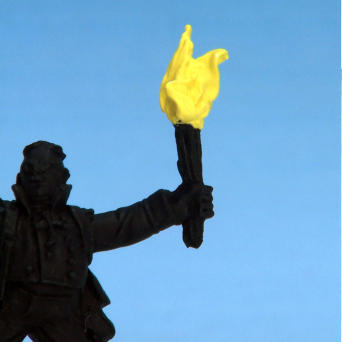
Above. 1. The first real stage is painting DEMONIC YELLOW
mixed with MATT WHITE, over all of the now white
undercoated flame area.

Above. 2. That is the easy bit done. The second colour is
DEMONIC YELLOW mixed with MATT WHITE plus some
FIRE LIZARD, which is a nice fiery orange. This next stage
does require a bit of judgement.
of the first layer showing in the depressions of the flames; if it were material that you were painting it would be like
if it were material that you were painting it would be like the darker shades showing. The better the sculpting the
the darker shades showing. The better the sculpting the easier this is to do (I used one of my older more worn-out
easier this is to do (I used one of my older more worn-out good brushes, not one of the top flight detail brushes, so
good brushes, not one of the top flight detail brushes, so that the coat is not even or smooth).
that the coat is not even or smooth). 
 if it were material that you were painting it would be like
if it were material that you were painting it would be like the darker shades showing. The better the sculpting the
the darker shades showing. The better the sculpting the easier this is to do (I used one of my older more worn-out
easier this is to do (I used one of my older more worn-out good brushes, not one of the top flight detail brushes, so
good brushes, not one of the top flight detail brushes, so that the coat is not even or smooth).
that the coat is not even or smooth). 
3.
The next layer is pure FIRE LIZARD. And you follow a similar process as the last layer, painting this on
follow a similar process as the last layer, painting this on to the higher points, leaving some of the previous two
to the higher points, leaving some of the previous two layers showing. You could leave the flaming torch at this
layers showing. You could leave the flaming torch at this point and call it finished.
point and call it finished.
 follow a similar process as the last layer, painting this on
follow a similar process as the last layer, painting this on to the higher points, leaving some of the previous two
to the higher points, leaving some of the previous two layers showing. You could leave the flaming torch at this
layers showing. You could leave the flaming torch at this point and call it finished.
point and call it finished.
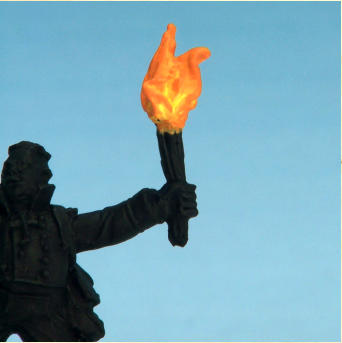
Above. 3. The next layer is pure FIRE LIZARD. And you
follow a similar process as the last layer, painting this on to
the higher points, leaving some of the previous two layers
showing.
4.
This next layer makes the flame pop, but you should be careful not to over do it. It is a layer of PURE
should be careful not to over do it. It is a layer of PURE RED painted on the higher points again as if it were a
RED painted on the higher points again as if it were a highlight but making sure you leave a good lot of the
highlight but making sure you leave a good lot of the previous layers showing. Again apply in a rough manner,
previous layers showing. Again apply in a rough manner, it’s not dry-brushed but it’s a similar technique with bit
it’s not dry-brushed but it’s a similar technique with bit more wet paint on the brush.
more wet paint on the brush. 
 should be careful not to over do it. It is a layer of PURE
should be careful not to over do it. It is a layer of PURE RED painted on the higher points again as if it were a
RED painted on the higher points again as if it were a highlight but making sure you leave a good lot of the
highlight but making sure you leave a good lot of the previous layers showing. Again apply in a rough manner,
previous layers showing. Again apply in a rough manner, it’s not dry-brushed but it’s a similar technique with bit
it’s not dry-brushed but it’s a similar technique with bit more wet paint on the brush.
more wet paint on the brush. 
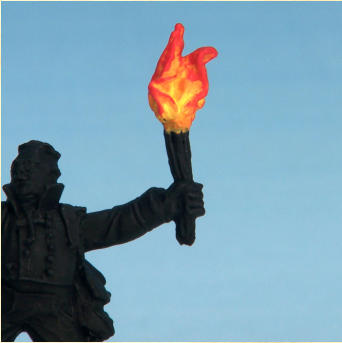
Above. 4. This next layer makes the flame pop, but you should
be careful not to over do it. It is a layer of PURE RED
painted on the higher points again as if it were a highlight.
5.
The last of the fire layers proper is a darker red, a light touch of DRAGON RED. Be very sparing with this
light touch of DRAGON RED. Be very sparing with this layer, catching the extremities of the flames. Don’t worry
layer, catching the extremities of the flames. Don’t worry however if you overdo a layer as you can always paint
however if you overdo a layer as you can always paint back in some of the previous layer and or layers right
back in some of the previous layer and or layers right 
 light touch of DRAGON RED. Be very sparing with this
light touch of DRAGON RED. Be very sparing with this layer, catching the extremities of the flames. Don’t worry
layer, catching the extremities of the flames. Don’t worry however if you overdo a layer as you can always paint
however if you overdo a layer as you can always paint back in some of the previous layer and or layers right
back in some of the previous layer and or layers right 
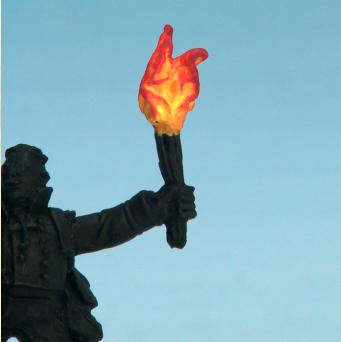
Above. 5. The last of the fire layers proper is a darker red, a light touch of DRAGON RED. Be very sparing with this layer,
catching the extremities of the flames.
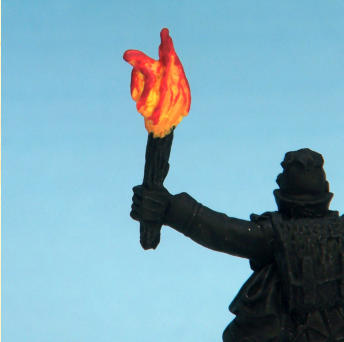
back to the original yellow/white base mix if needed. You could leave the flame at this point and call it finished.
6.
The last little flourish is a bit of smoke, just a touch
could leave the flame at this point and call it finished.
6.
The last little flourish is a bit of smoke, just a touch in MATT BLACK. Again be very sparing with the black,
in MATT BLACK. Again be very sparing with the black, less really is more here. Remember you are going for an
less really is more here. Remember you are going for an inner light effect, so don’t lose those lighter undertones.
inner light effect, so don’t lose those lighter undertones. 
 could leave the flame at this point and call it finished.
6.
The last little flourish is a bit of smoke, just a touch
could leave the flame at this point and call it finished.
6.
The last little flourish is a bit of smoke, just a touch in MATT BLACK. Again be very sparing with the black,
in MATT BLACK. Again be very sparing with the black, less really is more here. Remember you are going for an
less really is more here. Remember you are going for an inner light effect, so don’t lose those lighter undertones.
inner light effect, so don’t lose those lighter undertones. 
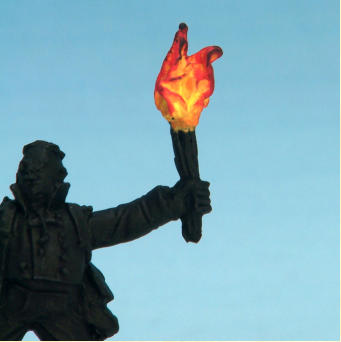
Above. 6. The last little flourish is a bit of smoke, just a touch in MATT BLACK. Again be very sparing with the black, less
really is more here. Remember you are going for an inner light effect, so don’t lose those lighter undertones.
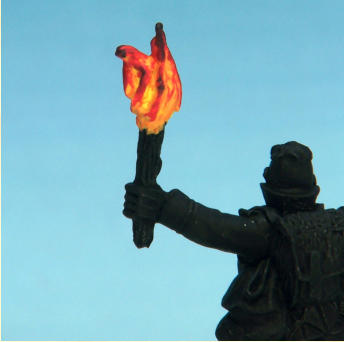
And that’s flames, seems weird I’ve not set it down before but I was inspired to write it down now by seeing Andrew’s
but I was inspired to write it down now by seeing Andrew’s wonderful flaming torch, he was on fire!
wonderful flaming torch, he was on fire!
 but I was inspired to write it down now by seeing Andrew’s
but I was inspired to write it down now by seeing Andrew’s wonderful flaming torch, he was on fire!
wonderful flaming torch, he was on fire!
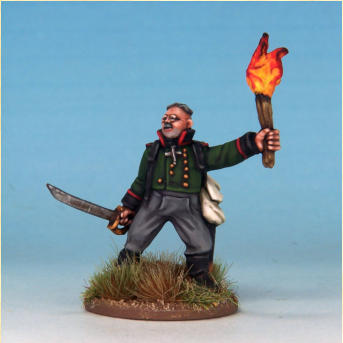
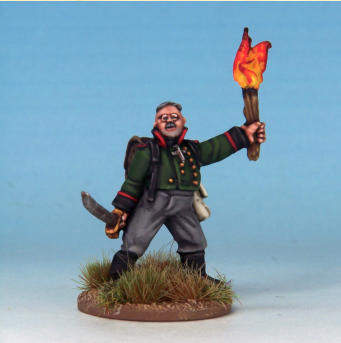
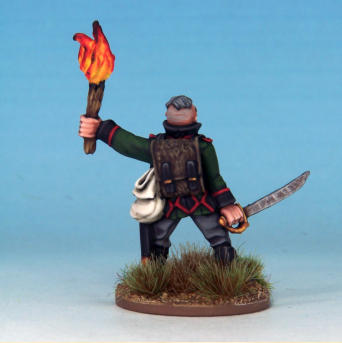
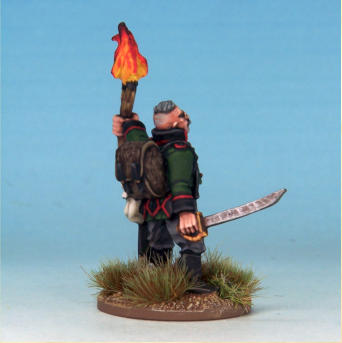
Below. The finished model painted as a Prussian Friekorp
officer in The Silver Bayonet.










